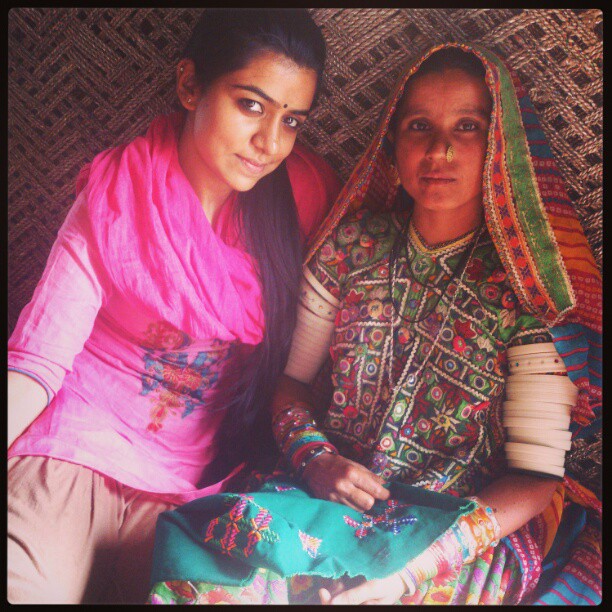Embroidered Rabari Art Work including all the stitches
Aarekhani being done using mud and water mixture by Devalben
Aarekhani being done using a pen
Chain stitch (saankdi)
Embroidery being done to highlight the aablo (mirror)
Sitaben embroidering a border
Devalben shaping the aablo (mirror) using the edges of earthen pot
Different shapes of aabhlo (mirror)
Motif done in Bakhiyo(running stitch) outline
Vaano stitch being used as a filler
It is mesmerizing to look at the rabari traditional embroidery pieces. It
is a beautiful art that caresses all the
colors in its arms. The embroideries are inspired from natural surroundings as Rabaris travel. Motifs are inspired from
cactus, parrots, peacock, hens, cows etc also, household things like dolls,
butter churner etc.
Embroideries are done mainly on torans(door hangings),orchas(blankets),
kanjaris(women tops), kedias(men tops), ghaghra borders(women skirt borders)and
bags. At first arenkhani(drawings) are done on these with the help of mud and
water. Stitches such as bakhiyo(running stitch) and sankdi(chain stitch) are
used as boundaries for each motif. Other stitches like kaanto, vaano,
baavadiyo, hardi,tunyari and 40 other kinds are used as fillers in the motifs.
Raging usage of abhlo (mirrors) further beautifies the embroiderer. Rabari embroideries are the only ones which has mirrors in every shapes and sizes. For
all the motifs the typical deri wari sankdi is used as a highlighter which is believed
to be inspired from cactus. There is riot of colors in every embroidered piece.
But there are restriction in what colors
to be used where. For example, only bright colours like yellow, orange, red and
white are used as highlighters also colours like blue and green are never used
as high lighters and only done in mirrors. The amalgamation of everything gives
birth to breathtaking embroidery pieces.










































